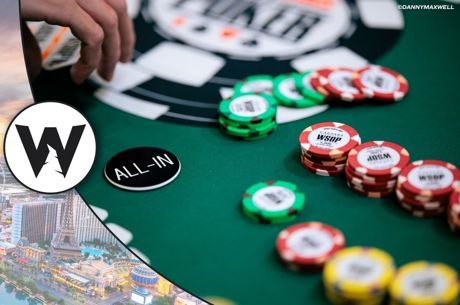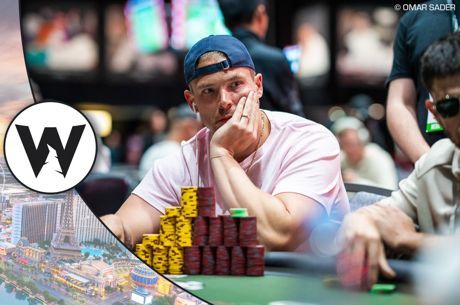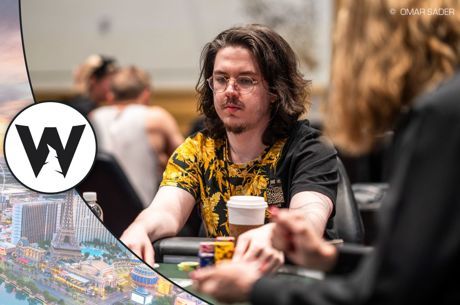Did Dimov's Donk Bet Do Damage? Or Did O'Dwyer Play It Perfectly? GTO Wizard Decides
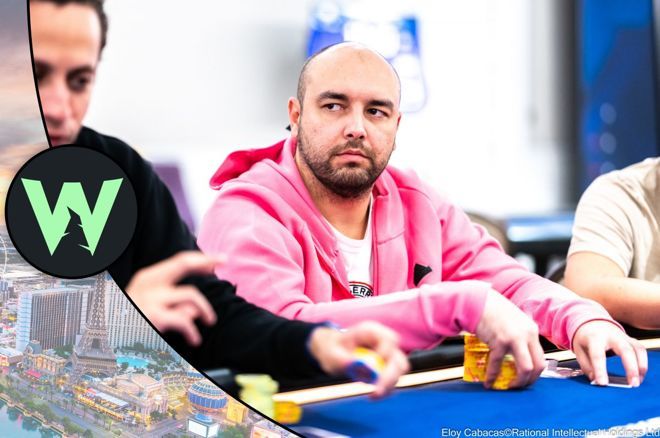
Table Of Contents
The PokerStars European Poker Tour sees some of the best poker players around the world battle it out on the felt, especially when an action-packer high-roller offering is on the schedule.
In the latest GTO Wizard Hand Analysis, we examine an enthralling hand between Ognyan Dimov and Steve O'Dwyer, in which the former attempted an ambitious triple-barrel bluff.
The Hand
Early on in Day 2 of the $50,000 Super High Roller at EPT Cyprus, Ognyan Dimov took an interesting line in a three-bet pot against Steve O'Dwyer in the biggest buy-in event of the series. O'Dwyer was the effective stack, starting the hand with around 50 big blinds and put on his hero-calling cape in a hand that raised a few eyebrows at the table
Level 9 : Blinds 3,000/6,000, 6,000 ante
Dimov raised from under the gun and called when O��Dwyer three-bet to 45,000 from the button.
Dimov opted not to play in flow and led out for 22,000 on the 7?6?5? flop. O��Dwyer called.
Dimov sized up to 65,000 on the Q? turn, and again O��Dwyer stuck around. The J? river put four-to-a-flush on the board and Dimov fired a third barrel of 75,000. O��Dwyer used several time banks while mulling over options, ultimately settling on a call.
Dimov was bluffing with A?3?, and O��Dwyer tabled K?K? for a pair of kings to take the pot.
PokerNews caught the hand when action was on the river. O'Dwyer relayed the preflop, flop and turn action to the live reporting team.
GTO Wizard Hand Analysis
Flop
Dimov decided to lead on a board that looked better for his range. Looking at the solution, however, we find out that he should almost never donk bet. The reason for that is simple: half of Dimov's range should be medium EQ hands (A or K high) that missed the flop and are trying to reach showdown.
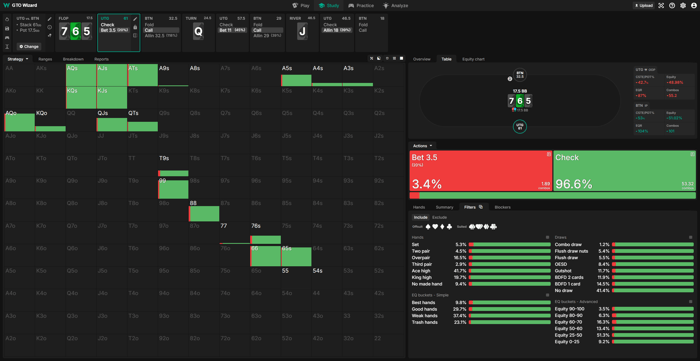
But when should I donk bet?
Donk betting doesn't occur often, because we will usually have a lot of medium EQ hands (~50%) that naturally want to check and reach showdown in a small pot. In these situations our strong hands want to check as well to assist our medium EQ hands from being overrun by the IP player.
In situations where our overall range is stronger than average and is missing medium EQ hands (due to the board hitting our range well), there are less incentives to protect our checking range as there are less medium EQ hands in our range trying to reach showdown. Also, when we hit the board well, our opponent will want to check back more which will decrease the EV of our value hands, so we make up for this EV loss by betting ourselves.
O'Dwyer's decision to just call vs the 20% pot sized donk bet is standard here, as there is no incentive to rush pot growth since KK doesn't require a lot of protection. He could jam hands like JxJx and 10x10x for value because these hands are vulnerable and can still be called by worse.
Turn
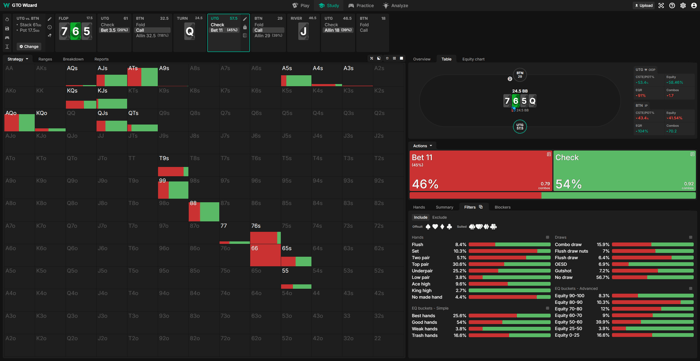
The Q is a great card for Dimov due to the abundance of Qx in his range (assuming hands like AQ, KQ, QJ, QT bet the flop). He could bet a smaller size here for a high frequency because his range should rarely miss this board as played. We adjusted the bet size to the one Dimov used (45% of the pot), which is suboptimal but still within reason. His hand A?3? as played should barrel here due to better Ax folding versus this line.
O'Dwyer��s optimal response is to raise all-in with K?Kx, but without a spade just calling is the highest frequency play here.
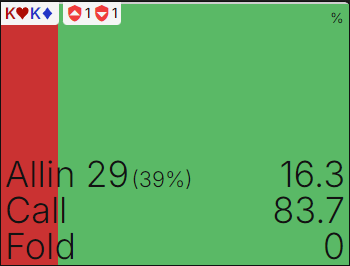
River
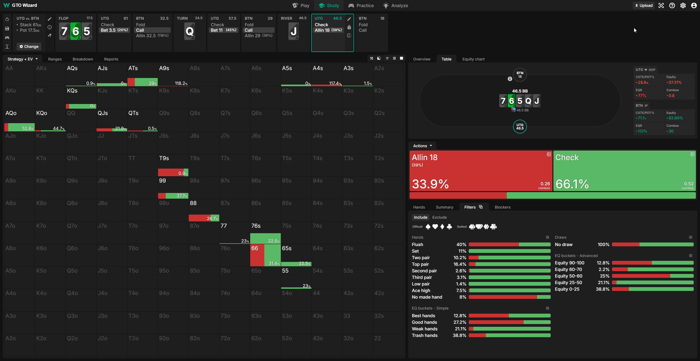
The rivered Js is a bad card for Dimov's range. As the bettor, he is allowed to bet a wider range than O'Dwyer is allowed to call on earlier streets, therefore O'Dwyer's range facing two bets has shifted more towards spades and hands with showdown value than Dimov's range, giving O'Dwyer a large equity advantage and restricting Dimov��s bluff allowance.

Since the river is such a bad card for Dimov, he should not only give up roughly 80% of his bluffs, but also play more passively with his value hands. Ad3d specifically always gives up the river.
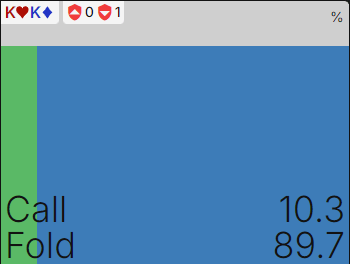
O'Dwyer's K?K? is indifferent on the river facing the ~40% pot-sized all-in, assuming Dimov bets with a perfectly balanced bluff:value ratio (read MDF & Alpha for more context). If Dimov is overbluffing even slightly, O'Dwyer can always profitably call all his bluff catchers, such as his K?K?. Given Dimov��s overcall preflop and over-aggressing on the flop, O'Dwyer could��ve assumed that it would be difficult and unlikely for his opponent to wave the white flag 80% of the time on the river, which might have led him to call the river so light.
Conclusion
Overall, we think that Dimov overestimated the equity of his range on the flop, leading him to donk bet a spot that shouldn��t allow donk bets. O��Dwyer navigated the hand perfectly and showed his exploitative muscle by correctly identifying his opponent's mistake and making the right call on the river.
Disclaimer: According to the preflop ICM solution we ran, Dimov should always fold A3s preflop to the 3bet since it's a losing call in theory. Therefore, we added A3s at a small frequency to his post-flop range to see how he should play if A3s were in his range. This might��ve affected O��Dwyer's river decision if he had known Dimov was overdefending.

